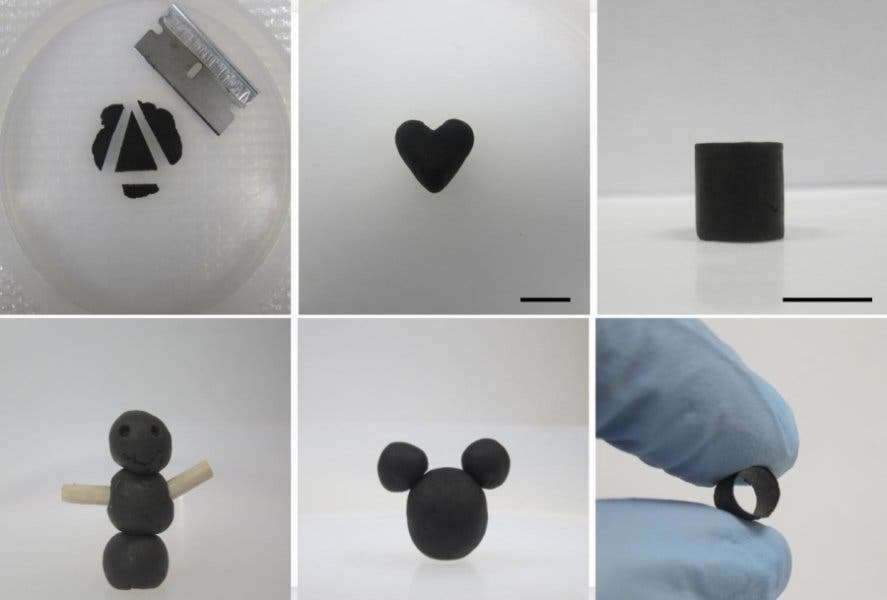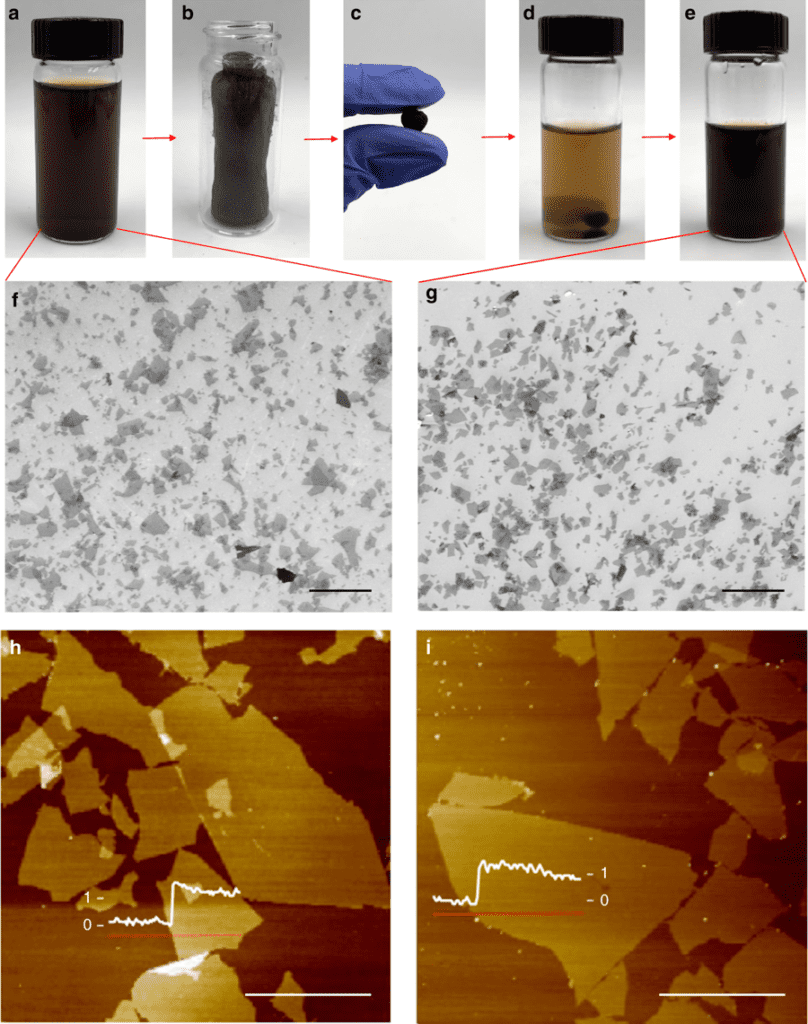Researchers at Northwestern University wanted to make graphene easier to handle — so they turned it into a toy. Yet this humble plaything might revolutionize how we use the material.

Image credits Jiaxing Huang / Northwestern University.
The team has turned graphene oxide (GO) into a soft, kneadable, and moldable playdough to make it safer and easier to transport. The material, however, can be shaped and reshaped into a variety of shapes and sizes. The so-called “GO dough”, while undeniably fun to play with, solves several long-standing problems plaguing the graphene manufacturing industry.
GO dough or go home
“Currently graphene oxide is stored as dry solids or powders, which are prone to combustion,” said Jiaxing Huang, the professor of materials science and engineering in Northwestern’s McCormick School of Engineering who led the study. “Or they have to be turned into dilute dispersions, which multiply the material’s mass by hundreds or thousands.”
Huang explains that his most recent shipment of graphene oxide — 5 kilograms / 11 pounds of the substance — came dispersed in 500 liters of liquid. The shipment had to be delivered by truck, he adds, which was very frustrating and impractical. Huang says the same amount of graphene oxide would weigh around 10 kg in dough form and he could “carry it [himself].”
Graphene oxide is the most common precursor used to make graphene, sheets of carbon just one-atom-thick that are remarkably strong and lightweight. Graphene is by far the strongest material ever tested. It’s an efficient conductor of heat and electricity, and it’s nearly transparent. These physical and electrical properties attracted a lot of attention from material scientists aiming to apply graphene to everything from car bodies to advanced electronics and batteries.
However, GO powder is quite explosive, so anyone looking to manufacture graphene on a large scale would have to employ costly methods of transportation and storage — which made the end material too expensive to be viable.
Huang’s team found a simple, and in my eyes, quite elegant, solution to this problem: they mixed a little water into the graphene oxide powder. They didn’t use any binding additives, as these would have to be removed later on to return the graphene oxide to its pure form.
“Adding binders such as plastics could turn anything into a dough state,” Huang explained, “but these additives often significantly alter the material’s properties.”
After being molded into whatever shape is desired, the dough can be converted into a solid form. The resulting items are hardy, electrically-conductive, and chemically stable. The raw dough can also be further processed to make bulk graphene oxide and graphene materials of different forms with tunable microstructures, the team adds. Alternatively, more water can be added to the dough to transform it into a high-concentration GO dispersion.

Image credits
Huang hopes that his GO dough will help graphene reach its much-anticipated potential as a ‘super-material’.
“My dream is to turn graphene-based sheets into a widely accessible, readily usable engineering material, just like plastic, glass and steel,” Huang said.
“I hope GO dough can help inspire new uses of graphene-based materials, just like how play dough can inspire young children’s imagination and creativity.”
I, for one, would definitely play with some GO dough.
The paper “Binder-free graphene oxide doughs” has been published in the journal Nature Communications.


